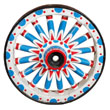Barnum & Bailey’s America Tableau
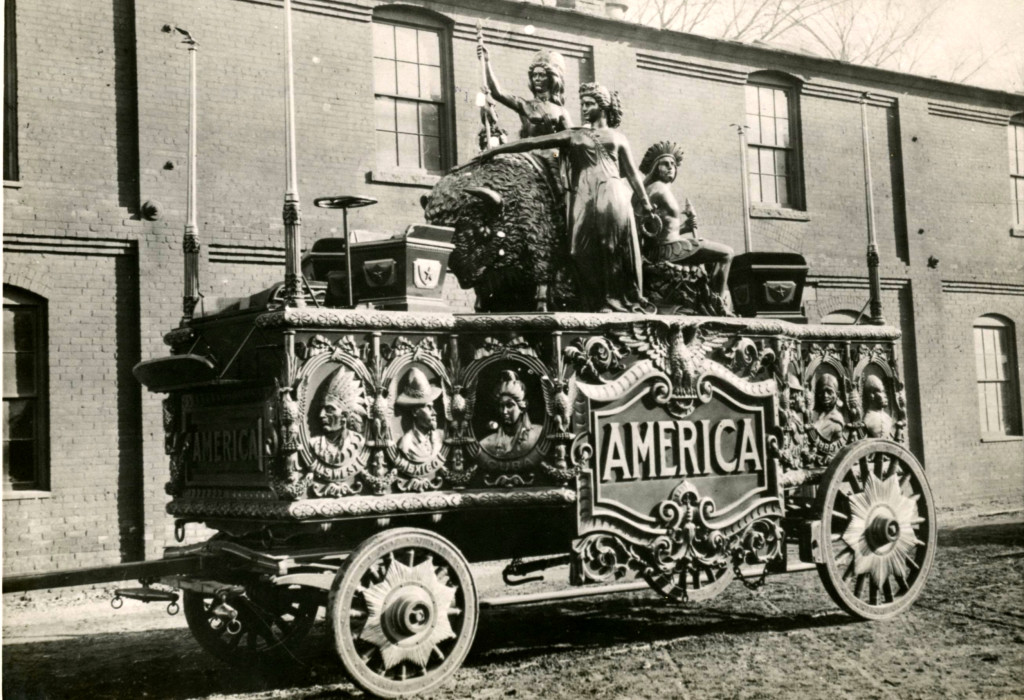
( 1903 – Conover set # 704 – photo # BB26 )
The America Tableau was built by the Sebastian Wagon Co. of New York in the year of 1902. The order was placed on January 14, 1902 (1) while the Barnum & Bailey Circus was still in Europe in anticipation of their return to the US for the 1903 season. It was used by the Barnum and Bailey Circus during the 1903 and 1904 seasons. It was left in the Bridgeport winter quarters in 1905 and 1906. With the death of James A. Bailey on April 11, 1906, the Barnum & Bailey Circus was eventually sold to the Ringling Bros. in 1907. This created a change of ownership of this wagon even though it still toured on the Barnum & Bailey Circus. It was then put to use again in 1907 and continued through the 1918 season.
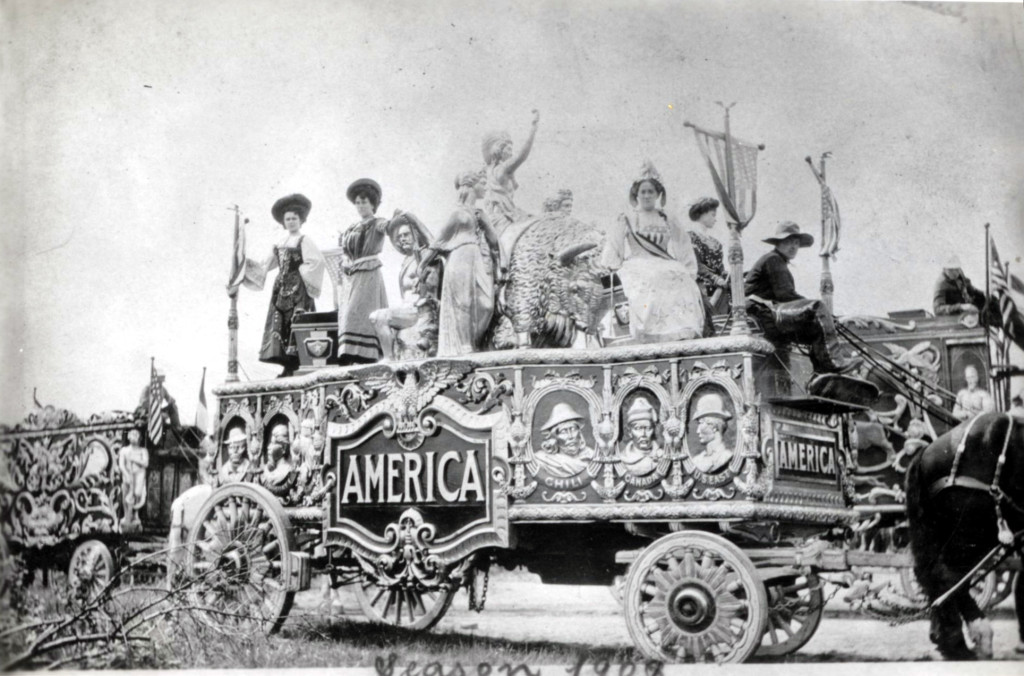
( 1908 – Conover set # 707 – photo # 53 )
In 1917, the upper statues were removed and the upper portion of the box frame was added to the wagon. Once the Ringling Bros. combined with the Barnum & Bailey Circus in 1919, the parade continued only for the 1919 and 1920 seasons.
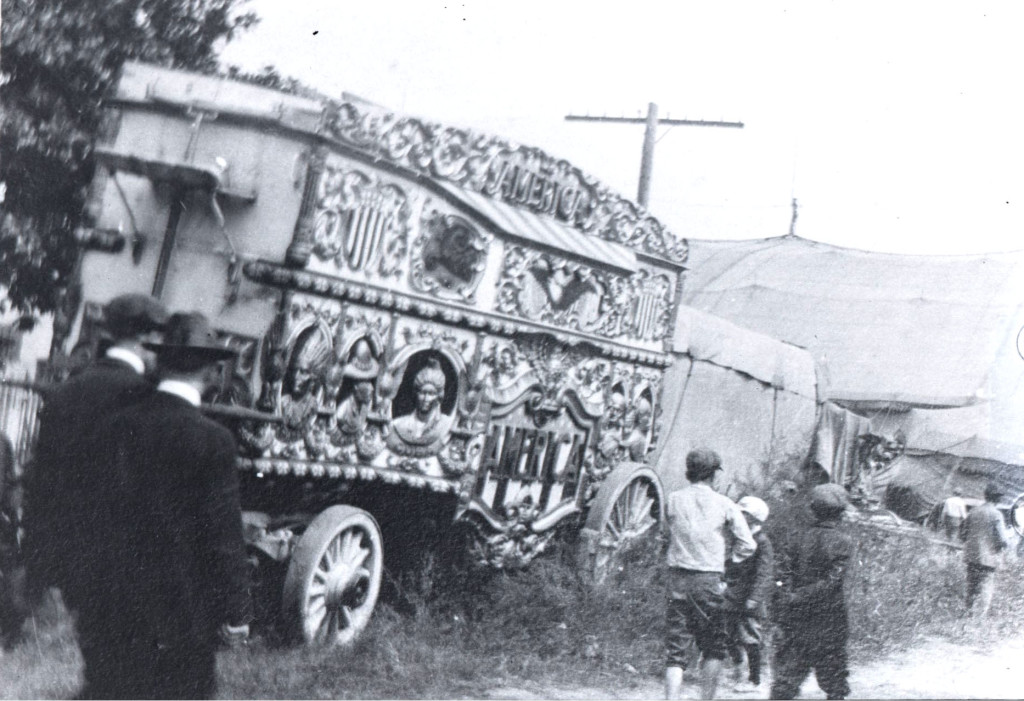 ( 1917 – Now built into a Box Tableau – Ralph Miller photo )
( 1917 – Now built into a Box Tableau – Ralph Miller photo )
After that, this wagon was left in the Bridgeport, CT winter quarters where it remained unto 1925. In the winter of 1925/1926, it was sold to George Christy of Houston, Texas with nine other parade wagons, five cages and floats for $3600.00. (2)
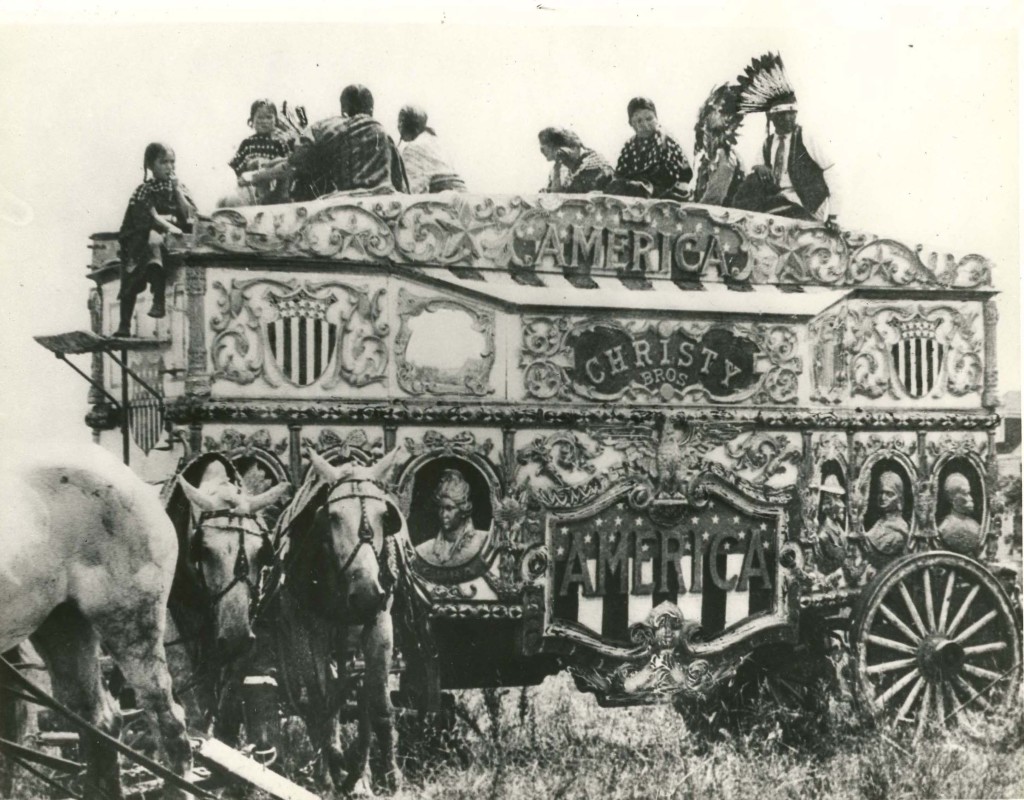 ( 1927 – JTB # 81 – photo # 13A – Aug. 10, 1927 Christy Bros. in South Norwalk, CT. – M.B. Brinley Collection )
( 1927 – JTB # 81 – photo # 13A – Aug. 10, 1927 Christy Bros. in South Norwalk, CT. – M.B. Brinley Collection )
The Christy Bros. Circus used this wagon from 1927 to 1930. The 1929 Christy loading list, has the America as # 31. (3) It was then left in the Christy winter quarters in S. Houston, Texas until 1934 when it was purchased by Zach Terrell and Jess Adkins for their all new Cole Bros. Circus.
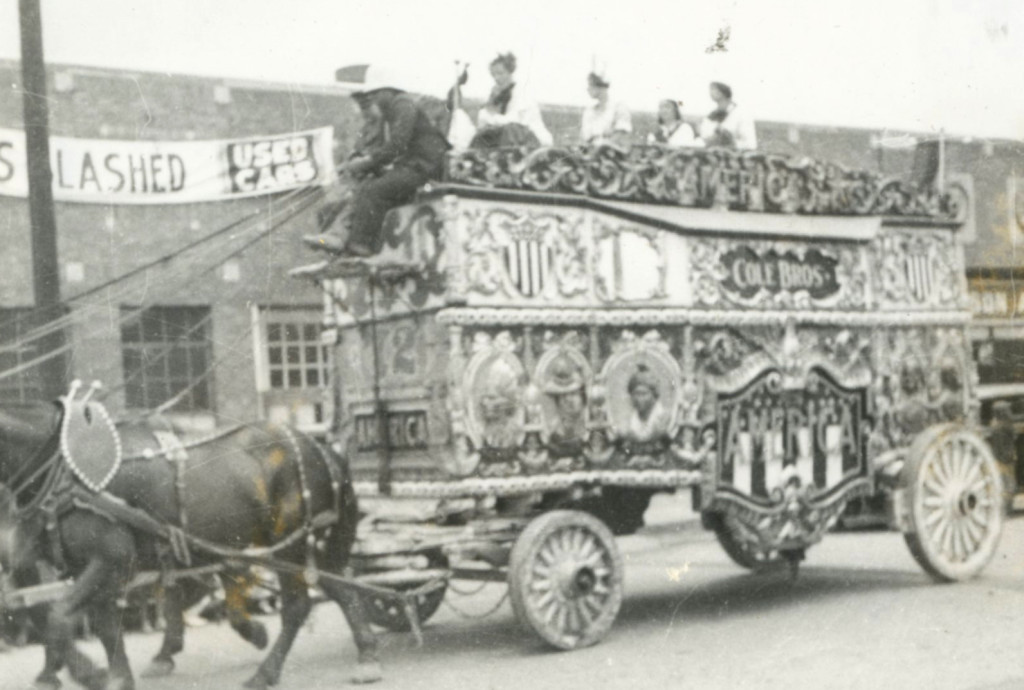 ( 1935 – Conover Set # 468 – photo # 4511 )
( 1935 – Conover Set # 468 – photo # 4511 )
In 1935, the wagon was carrying the number 72. By 1939, the wagon was carrying the number 76. In February of 1940, the Rochester winter quarters shop building caught fire burning many wagons and animals that were nearby. The newly built calliope perished. The America tableau was converted to a calliope following the fire. It was used on the show during the 1940 season.
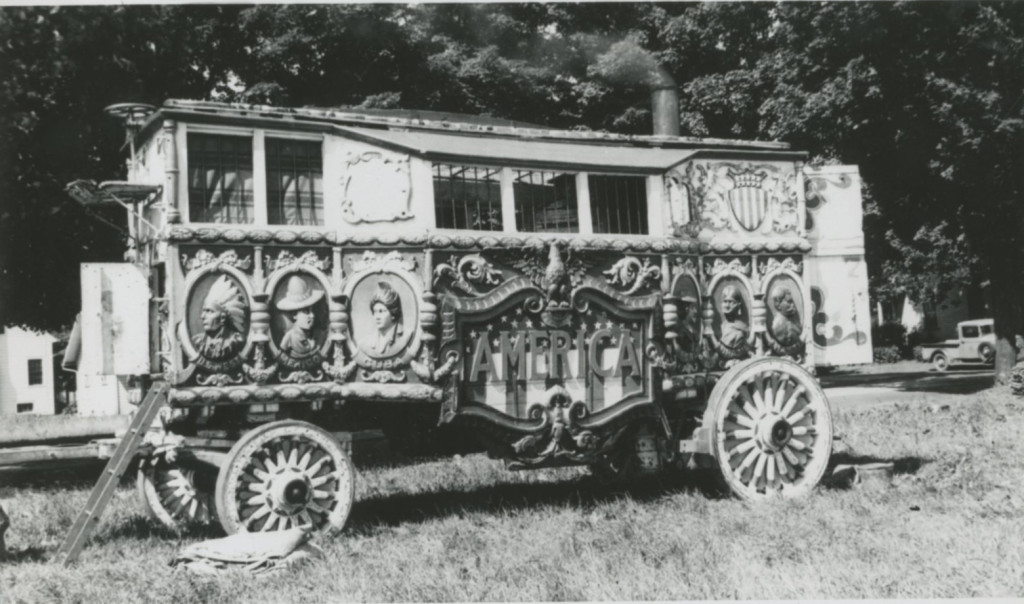
( 1940 – Conover Set # 96 – photo # 239 )
Following the 1940 winter quarters fire in Rochester, Indiana, the show winter facilities was relocated to the Louisville, KY. Fairgrounds. The America sat idle there from 1941 through 1945. In 1946, the wagon had a different wheel setup when it was taken on the road once again.
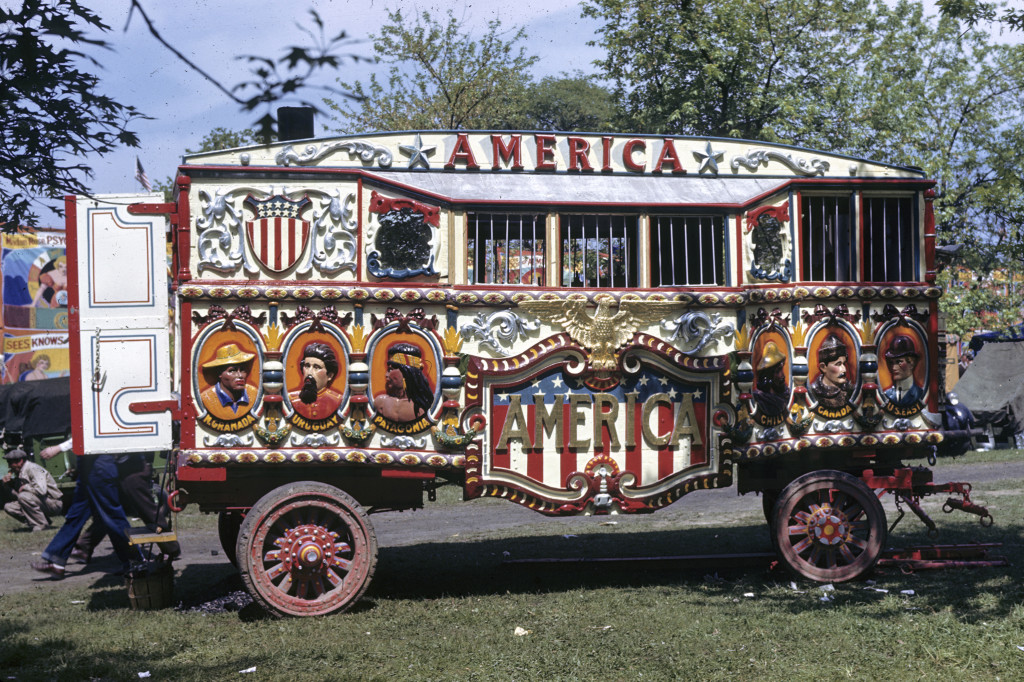
( 1946 – Used with permission from Illinois State University’s Special Collections, Milner Library. )
The wagon was used on the Cole Bros. Circus as a steam calliope from 1946 through the 1949 seasons. By 1950, the decision was made to move the winter quarters down to Miami at a mothballed naval Base. The calliope upper opening panels were modified at this time.
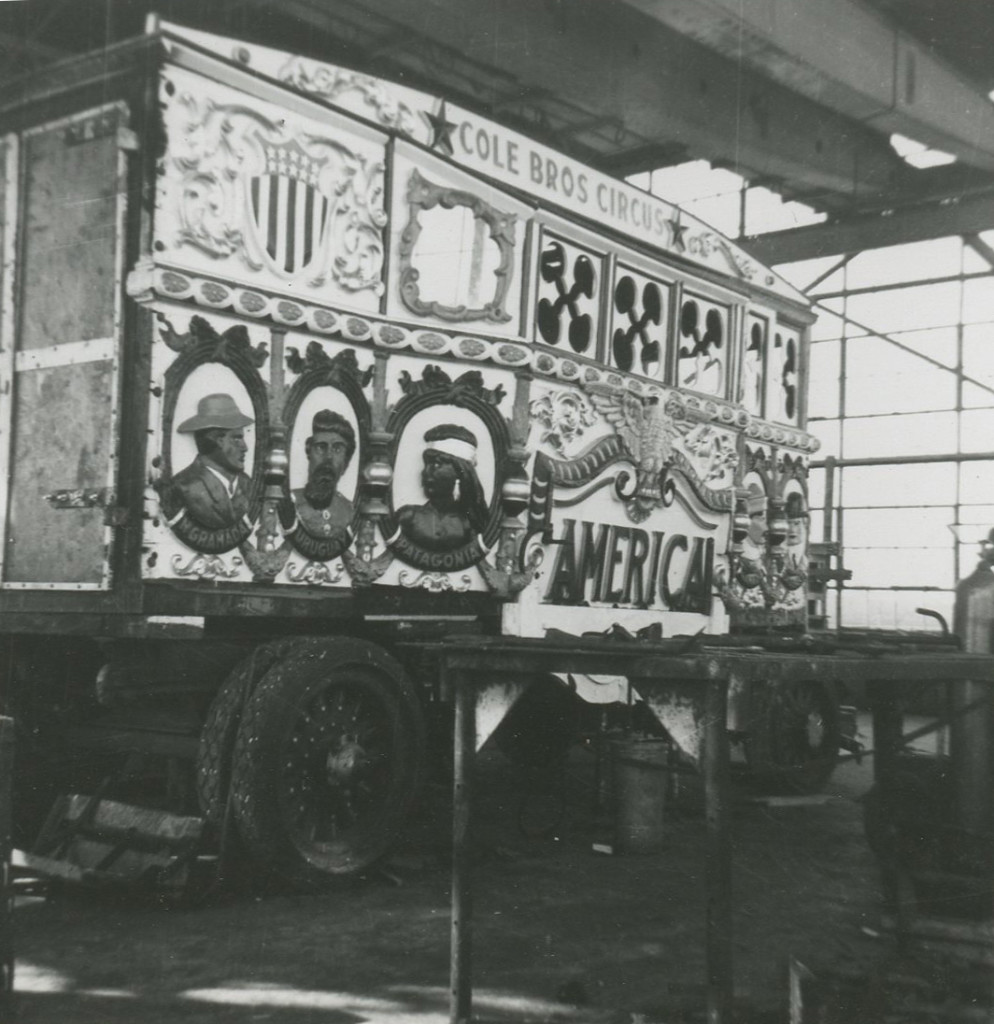
( 1950 – Conover Set # 59 – photo # 3418 )
After being used in the 1950 tour of the Cole Bros. Circus, it was then left in the new Peru, Indiana winter quarters at what was the old Terrell Jacobs farm. With the end in sight for the Cole Bros. operation, the wagon was sold to boiler specialists Cleaver-Brooks, of Milwaukee, Wisconsin, on March 8, 1952. They kept it and used it in occasional parades through 1959.
Need a Cleavor Brooks photo Here
On December 1,1958, the Cleavor-Brooks Co. donated the wagon to the newly created Circus World Museum. It was restored and re-numbered # 72.
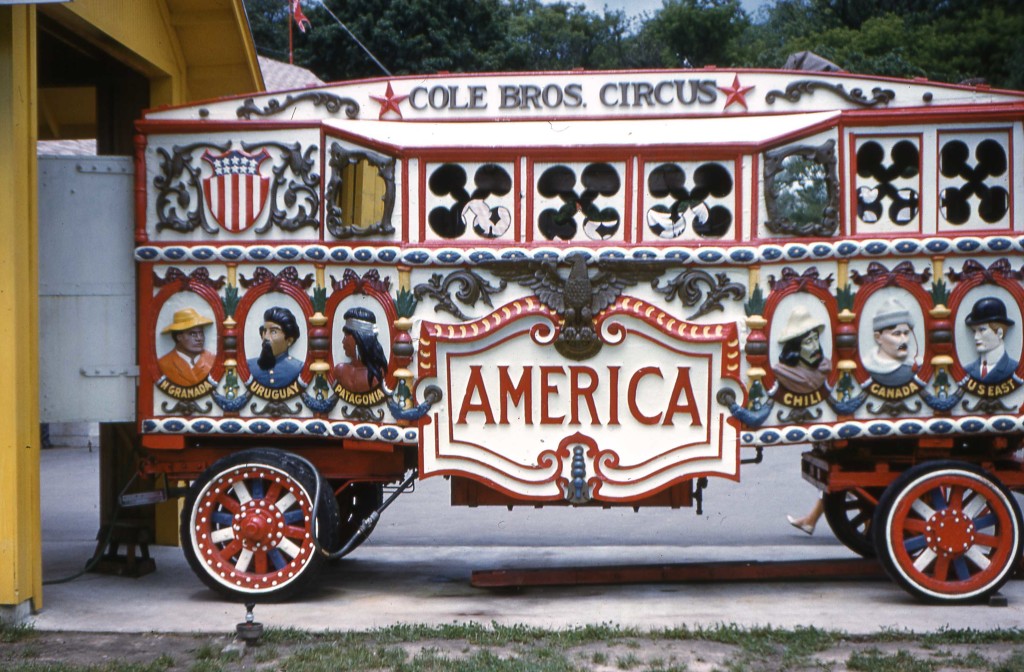
( 1960 – Richard Cline photo )
The America Steam Calliope gave daily performances at the Circus World Museum for many years sitting near the front end of the new Museum. IN 1963, the wagon was restored to a less colorful version.
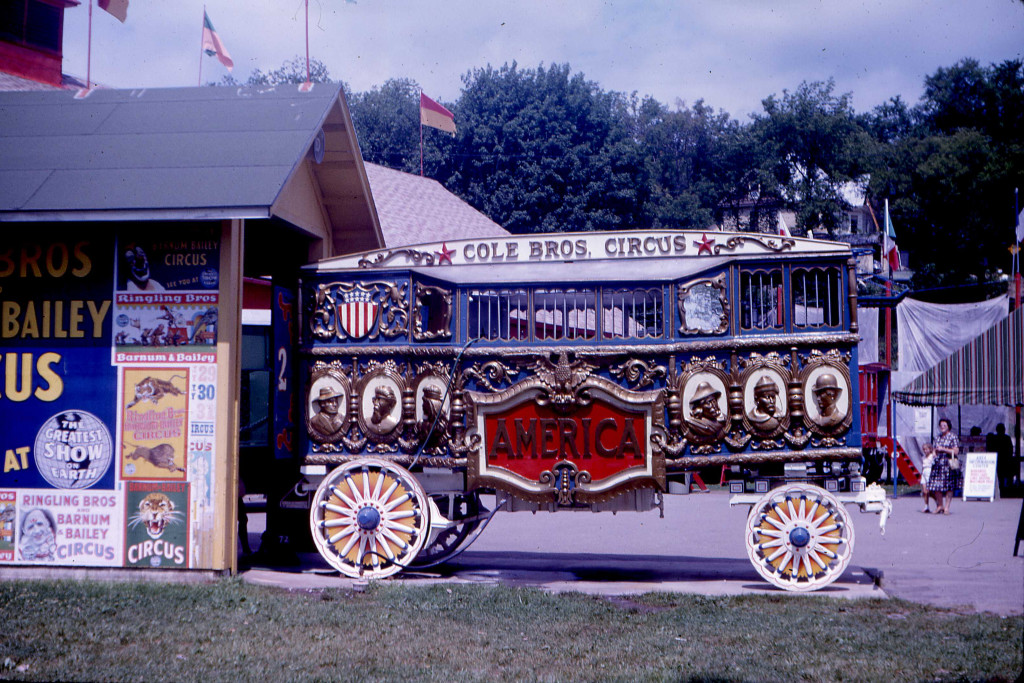
( 1963 – Richard Cline photo )
Restoration on this wagon occurred one more time in the shops of the Circus World Museum in 1998 when the brightly colored look of the 1939 Cole show took over the America. The number was also changed back to # 76.
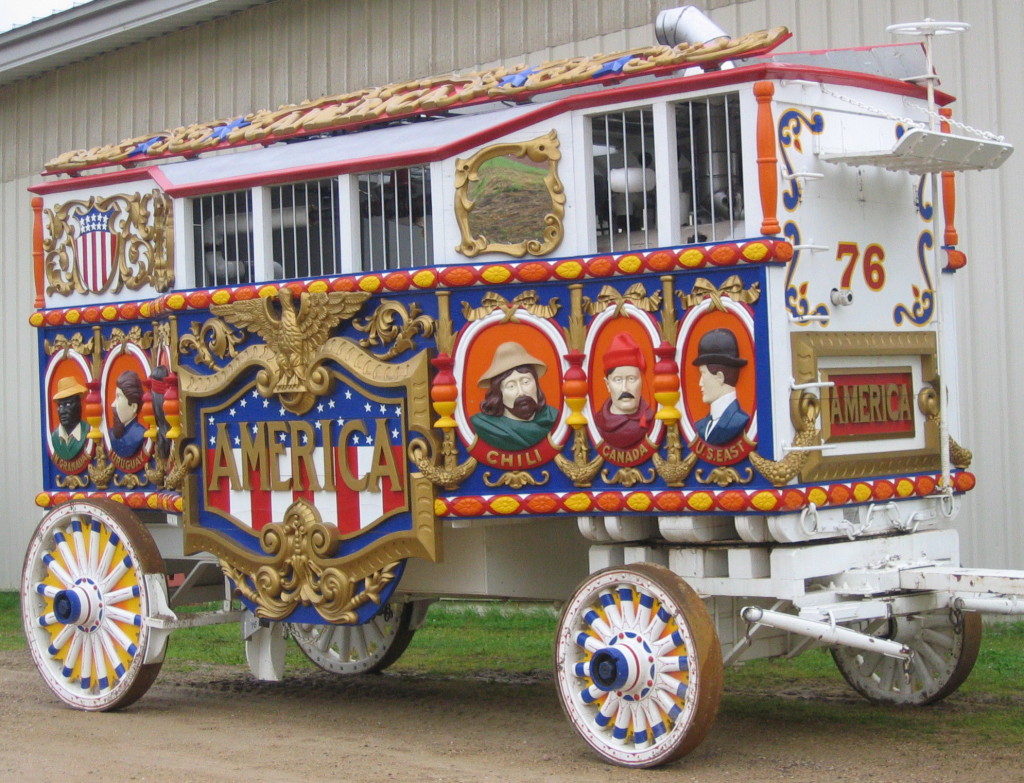
Although the calliope is not used very much anymore, it is still a functioning unit which participates in an annual circus parade in Baraboo. The wagon is noted as having dimensions of Length 21’, Height, 10’9”, Width 8’. The wagon can be seen in person at Circus World in Baraboo, Wisconsin
(1) Artists in Wood, Frederick Fried, Page 101
(2) Bandwagon, July / August 1996, page 31
(3) Bandwagon, November / December 1996, page 51.
If you have any questions or have more photographic evidence, feel free to contact us at circuswagons@gmail.com
